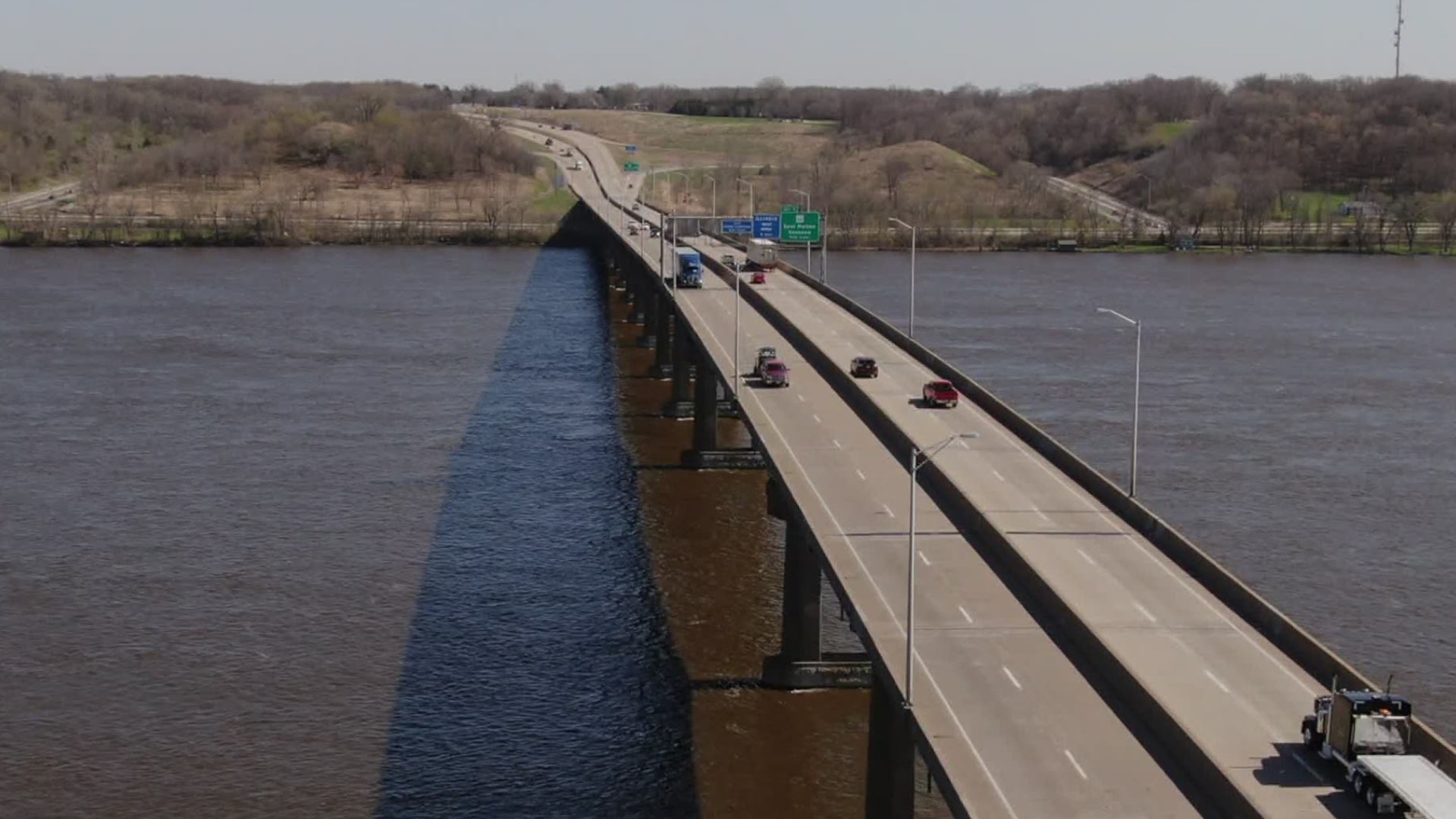RAPIDS CITY, Ill. — The Illinois Department of Transportation has narrowed down potential options for plans to build a new I-80 bridge from seven to four.
IDOT previously revealed the seven options at a public meeting in May. The four options that will move forward for further evaluation were revealed on Thursday at IDOT's third I-80 public meeting.
All of them include four 12-foot traffic lanes, two 12-foot auxiliary lanes, 12-foot outside shoulders and 6-foot inside shoulders. Each alternative would also require the U.S. Highway 67 and Illinois Highway 84 interchanges to be reconstructed to fit current design standards.
While evaluating the options, IDOT said it took impacts to the environment and traffic into consideration. The remaining options also most closely align with the 327 questions and comments the department received following the last meeting.
The options no longer being considered were referred to as options one, six and seven. Option one involved building the new bridge on top of the existing alignment. It would have meant traffic detours to an alternative crossing for at least four years.
Option six proposed building a new bridge 600 feet to the east of the current bridge, while option seven proposed building 2,100 feet to the west.
"The primary reason for that is that they would have the greatest impact on the environment," said Tony Pakeltis, a representative of Parsons Corporation and a member of the I-80 bridge panel that hosted the public meeting. "Alternative seven has the greatest relocation, right of way and habitat and prime farmland impacts and alternative six has the second highest impact in those same categories."
Taking those options out of consideration is the "best case scenario" for Rapids City Village President Harold Mire Jr.
"I didn't think they were feasible," Mire said. "I thought they had the most negative impact amongst residents on both sides of the river, so I was very pleased that those three were eliminated... It would impact residential areas, it would impact property tax rolls, it would impact businesses."
Two of the options that remain involve placing the new bridge 50 feet to either the east or west of the existing structure. In this scenario, the current bridge doesn't necessarily have to be demolished.
The other two options both require demolition. In these scenarios, a companion bridge would be built 20 feet to the east of west of the existing structure. During construction, traffic would continue to utilize the current I-80 crossing and would not need to find an alternative route. After phase one is complete, traffic would be switched to the finished companion bridge while the existing I-80 bridge is torn down and a replacement is built instead.
Mire favors the options that involve building a new bridge to the west of the current one.
"As the village president, it's my duty to advocate for the least disruptive options for our citizens, which include quality of life factors, safety factors, minimization of adverse economic impacts, amongst others," he said. "And so far as the 20 or 50 foot west, that would have the least disruptions to our residents."
At this point in its study, IDOT is not taking the proposed Bison Bridge project into consideration, and won't be used as IDOT moves forward to identify the preferred location of the new bridge.
"The development and analysis of alternatives for this project is based on the purpose and need, as well as an evaluation of resulting environmental impacts as is expressly required by the National Environmental Policy Act," Pakeltis said. "A potential Bison Bridge or park is not an existing environmental resource and cannot be used to mitigate any impacts to environmental resources that currently exist."
Two of the options that IDOT is moving forward with, however, don't mean the Bison Bridge proposal is dead yet. The plans to build 50 feet to the east or west of the existing structure don't require demolition, leaving the Bison Bridge a viable option in the future.
Chad Pregracke, the founder of the Bison Bridge Foundation, told News 8 after the meeting Thursday night his team is happy with how it went. He remains hopeful for the future of the project.
As far as Mire's preference for demolition or not, he said the timeline would need to be taken into consideration. Options that require demolition could take an extra two years to be completed.
"Let me say this about the Bison Bridge project: it has a long way to go. It has many, many hurdles to overcome," Mire said. "If the state of Illinois were to say that they were going to choose one of the options that did not use the current location of the bridge, I would be in favor of not using taxpayer dollars to demolish it... Why spend $2 or $3 million if you have a project that you will be able to show you can fund and sustain years and years into the future and maintain all the safety factors?"
During this phase of the I-80 bridge project, the cost of each design isn't being taken into consideration, per NEPA law requirements.
Project leaders expect to host another public meeting next year to present a preferred location proposal. A final report and recommendation of the project's preferred location option is expected at the end of 2023.
Between now and Nov. 10, you can submit your opinions, comments and questions about the location proposals here.
Watch more news, weather and sports on News 8's YouTube channel

